Formulas Flashcards
1
Q
Current Ratio
A
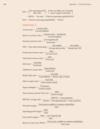
2
Q
Quick ratio
A
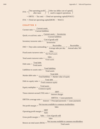
3
Q
Acid Test
A
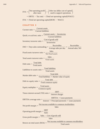
4
Q
Inventory Turnover Ratio
A

5
Q
Value
A
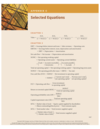
6
Q
EBIT
A
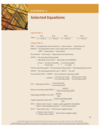
7
Q
EBITDA
A
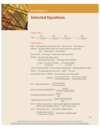
8
Q
Net Cash Flow
A
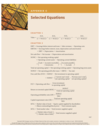
9
Q
NOWC
A

10
Q
Total net operating capital
A
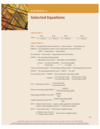
11
Q
NOPAT
A
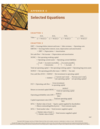
12
Q
FCF
A
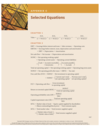
13
Q
ROIC
A
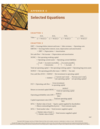
14
Q
Capital Requirements ratio (CR)
A
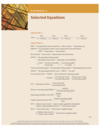
15
Q
Operating profitability ratio (OP)
A
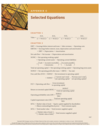
16
Q
MVA (2 different equations)
A
Market Value Added

17
Q
EVA (3 equations)
A
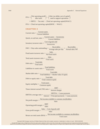
18
Q
Fixed assets turnover ratio
A
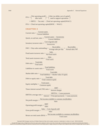
19
Q
Total Assets Turnover Ratio
A
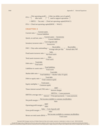
20
Q
DSO
A
Days Sales Outstanding
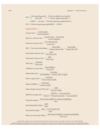
21
Q
Debt ratio
A

22
Q
Liabilities-to-assets ratio
A

23
Q
Market debt ratio
A
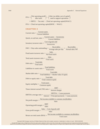
24
Q
Equity multiplier
A
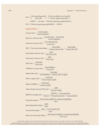
25
TIE
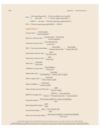
26
EBITDA coverage ratio
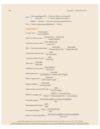
27
Net Profit margin
aka
1) profit margin
2) profit margin on sales
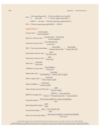
28
Operating profit margin
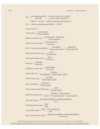
29
Gross profit margin
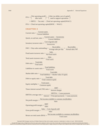
30
ROA (2 equations)
Return on total assets

31
BEP
Basic earning power
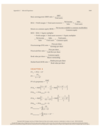
32
ROE (3 equations)
Return on Equity
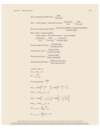
33
P/E
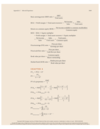
34
P/CF
Price/cash flow ratio

35
BVPS
Book value per share
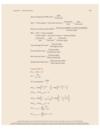
36
M/B
Market/book ratio
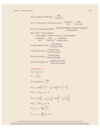
37
FVN
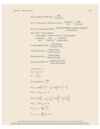
38
PV
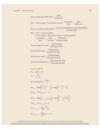
39
PV of a perpetuity

40
FVAN
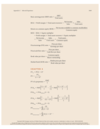
41
FVADue
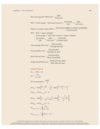
42
PVAN
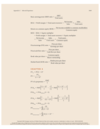
43
PVADue

44
PVUneven stream
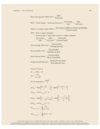
45
FVUneven stream

46
IPER
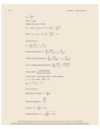
47
APR
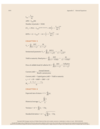
48
FVN
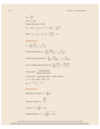
49
Number of periods
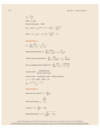
50
EFF%
aka
EAR%
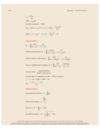
51
VB

52
Semiannual payments: VB
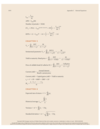
53
Yield to maturity: Bond price =
This rate is called the bond’s yield to maturity (YTM), and it is the interest rate generally discussed by investors when they talk about rates of return. **The yield to maturity is usually the same as the market rate of interest, rd.**

54
Price of callable bond (if called at N)
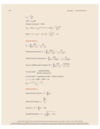
55
Current yield
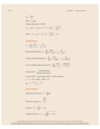
56
Yield to Maturity: Bond Price
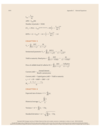
57
define rd
from p. 215
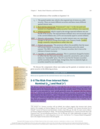
58
IPN
the inflation rate built into a 30-year bond is the **average rate of inflation** expected over the next 30 years. If It is the expected inflation during year t, then the inflation premium for an N-year bond’s yield (IPN) can be approximated as:
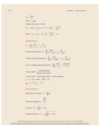
59
Expected rate of return for a portfolio where you are given the expected rates of return for each item in the portfolio
The weights are the probabilities, and the weighted average is the expected rate of return (rhat), called “r-hat,” which is the mean of the probability distribution
Here ri is the return if outcome i occurs, pi is the probability that outcome i occurs, and n is the number of possible outcomes. Thus, r-hat is a weighted average of the possible outcomes (the ri values), with each outcome’s weight being its probability of occurrence.
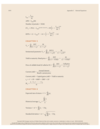
60
Historical average for r
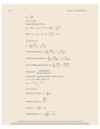
61
Variance of "r" with weighted scenarios
verify: In statistics the hat symbol (e.g. p-hat) denotes the mean of a sample vice the mean of population.

62
Standard deviation of "r" with weighted scenarios
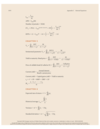
63
Historical estimated σ
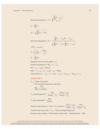
64
r(hat)p
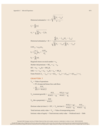
65
Calculate σp by using ri
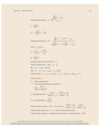
66
Historical estimated rho
rho = R
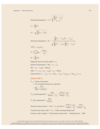
67
COViM
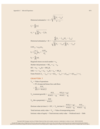
68
bi
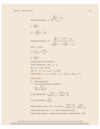
69
bp
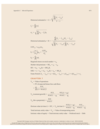
70
Market risk premium
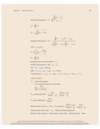
71
RPi
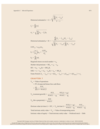
72
SML
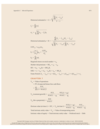
73
Fama-French

74
Predicted return based on Fama-French model
Predicted return = ai + bi(rM,t) + ci(rSMB,t) + di(rHML,t)
75
Operating Cost of Capital
Operating Capital x WACC
From EVA equation

76
3 equations that have EBIT in the numerator
1) Operating Profit Margin = EBIT/Sales
2) BEP (i.e. Basic Earning Power) = EBIT/TA
3) TIE (i.e. Times Interest Earned) = EBIT/Interest
77
Estimated Stock Price (via Intrinsic Stock Price)
**Total Intrinsic Value** = VOP + Sht-term Inv. = VOP + Value of nonoperating assets
**Intrinsic Value of equity** = Total Intrinsic Value - All Debt - PS where PS = P.Stock
**Intrinsic Stock Price** = (Intrinsic VoE) / CSO where VoE = Value of equity
\*\*There is practice problem at the bottom of p. 302 that asks for the "estimated price per share" wherein one must use the Intrinsic Stock Price formula to derive the answer.
\*\*Also, there is a picture on p. 303 that depicts the steps for calculating the "Estimated intrinsic stock price".
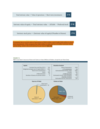
78
Estimate the FCF at time "t" with a constant growth rate
FCFt = FCFx(1 + gL)t-x
(eqn 7-7 from p. 304)
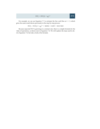
79
List the common mistakes when applying the Constant growth model.
**If growth is greater than the cost of capital, you must use the multistage model.**

80
Describe the 4 steps of the Multistage Model: Valuation When Expected Short-Term Free Cash Flow Grows at a Nonconstant Rate
**Step 1**: Because the short-term growth rates are nonconstant, we cannot immediately apply the constant growth model from the previous section. However, we can use the multi-stage valuation model to estimate the value of operations, as described in the following steps:
**Step 2**: Forecast expected free cash flows and calculate the annual growth rates for each year in the forecast. **Continue forecasting additional years until the growth rate in FCF is expected to become constant.** The last year in the forecast is called the forecast horizon. It is also called the horizon date or the terminal date (because it is at the end of the explicit forecast, not because the free cash flows terminate). For companies in mature, highly competitive markets, you may need to forecast only a few years. For companies in high-growth industries, you may need to forecast 15 to 25 years.
**Step 3**: immediately after receiving the FCF at the horizon date. This is also called the terminal value (because it is at the end of the explicit forecast) or the continuing value (because it is the value if the operating assets continue to be used rather than be liquidated).
**Step 4**: Create a time line with the free cash flows for each year up to the horizon date. The time line should also include the horizon value at the horizon date. This means there will be two cash flows on the horizon date, the free cash flow for that year and the previously calculated horizon value.
Discount the cash flows in the time line using the weighted average cost of capital. The result is the estimated value of operations as of t = 0.
81
Multistage Model equation
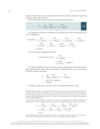
82
Multistage Model equation diagram
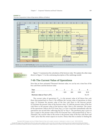
83
Describe the steps (i.e. the inputs) for using a financial calculator to derive the VOP for uneven CFs that involve a Horizon value.
The **_sum_** of the last CF (in the uneven series) plus the Horizon value should be entered as one value in the last CF entry on your financial calculator.
**Example problem:**
A company expects FCF of -$10 million at Year 1 and FCF of $20 million at Year 2; after Year 2, FCF is expected to grow at a 5% rate. If the WACC is 10%, then what is the horizon value of operations, Vop(Year 2)? (**$420 million**) What is the current value of operations, Vop(Year 0)? (**$354.55 million)**

84
Find the value of operations at one year prior to "t".
Simply omit the (1 + gL) multiple of FCFt which would normally be used to find FCFt+1
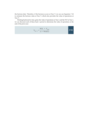
85
1) Cathey Corporation currently has sales of $1,000, which are expected to grow by 10% from Year 0 to Year 1 and by 4% from Year 1 to Year 2. The company currently has an operating profitability ratio (OP) of 7% and a capital requirement ratio (CR) of 50% and expects to maintain these ratios at their current levels. The current level of total net operating capital (OpCap) is $510. Use these inputs to forecast free cash flow (FCF) for Years 1 and 2. (Hint: You must first forecast sales, net operating profit after taxes (NOPAT), and total net operating capital (OpCap) for each year.)
2) Cathey Corporation has a 12% weighted average cost of capital. Cathey’s free cash flows, estimated in the previous question, are expected to grow at 4% beginning at Year 2 and thereafter. What is the horizon value (use Year 2 for the horizon)? What is the current value of operations?
3) Cathey Corporation has $80 in short-term investments, $20 in short-term debt, $140 in long-term debt, $30 in preferred stock, and 10 shares of common stock outstanding. Use the value of operations from the previous question to estimate the intrinsic common stock price per share.
1) (**$37.00 and $58.08)**
## Footnote
**2)** (**$755.04 and $681.25)**
**3)** (**$57.13)**
Steps:
1. Project Sales with growth rate given.
2. Derive NOPAT from the given OP ratio and Sales data.
3. Project NOPAT w/ the same growth rate as the Sales data.
4. Project OpCp by using the already projected Sales data while maintaining the constant CR (Capital Requirements) ratio.
5. Calculate FCF1 = NOPAT1 - (OpCp1 - OpCp0)
6. Calculate FCF2 = NOPAT2 - (OpCp2 - OpCp1)
86
VOP
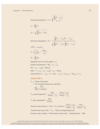
87
FCFt within a stream of CFs that involve constant growth.
FCFt = FCFx(1+gL)t-x
88
VOP (constant growth)
p. 305 (yellow highlight) dictates to NOT use this formula if gL \> WACC bc this results in (-) VOP which is "impossible".
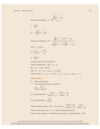
89
VOP (for a perpetuity)
FCF / WACC
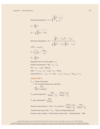
90
Horizon Value (at time t)
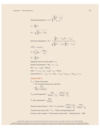
91
Total intrinsic entity value
TIEnV = VOP + Value of nonoperating assets
= VOP + Sht.I where Sht.I = Short-term Investments

92
Intrinsic Value of Equity
IVE = TIEnV - PS - D
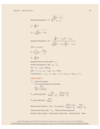
93
ISP (Intrinsic Stock Price)
ISP = IVE / CSO
IVE = TIEnV - PS - D
TIEnV = Vop + VNOA where VNOA = Value of nonoperating assets
= VOP + Sht.I where Sht.I = Short-term Investments
{this was NOT on the formula sheet, but it worked in the problems}
94
VOP (at Horizon Year T)
{2 equations}
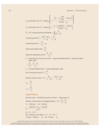
95
P(hat)0 = PV of expected future dividends that are nonconstant

96
Find P0(hat) for a stock with constant growing dividends
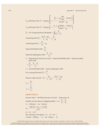
97
Constant growth of rs(hat)
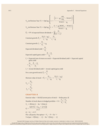
98
Expected dividend yield
D1 / P0
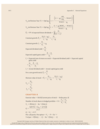
99
Expected capital gains yield

100
Expected rate of return on stock

101
rs(bar)
Actual dividend yield + Actual captial gains yield
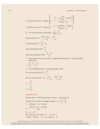
102
For a zero growth stock, P0(hat)
D / rs
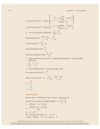
103
Horizon value of stock
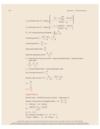
104
Vps
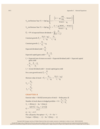
105
rps(hat)
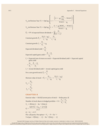
106
Explain the pattern for the constant growth formula
Use the 2nd repetitive CF (in series of constant growth) in the numerator.
This works for both FCF and Dividends even though the notation is slightly different.
For dividends, realize that the problem might provide an expected dividend one year (or period) from today that will grow at a constant rate (gL). This dividend (D1) is the dividend value you should input into the formula for P0(hat) even though the problem might provide only D1 data. See example below.
-----------
A stock is expected to pay a dividend of $2 at the end of the year. The required rate of return is rs = 12%. What would the stock’s price be if the constant growth rate in dividends were 4%? (**$25.00)** What would the price be if g = 0%? (**$16.67**)
107
If given D0, and you are asked to calculate P0(hat) with a series of future dividends, EXCLUDE D0 from your CF inputs such that CF0 = 0.
108
1) Dodd Corporation is a private company that earned $4.00 per share for the most recent year. If the average P/E ratio of a group of comparable public companies is 11, what is an estimate of Dodd’s stock value on a per share basis?
2) The company in the previous question, Dodd Corporation, has 100,000 shares of common stock owned by its founder. Dodd owes $1,300,000 to its bank. Dodd has 11,400 customers. If the average ratio of total entity value to customers is $500 for a group of comparable public companies, what is Dodd’s estimated total entity value?
3) What is its estimated stock value on a per share basis?
1) (**$44.00**)
2) **($5,700,000**)
3) (**$44.00**)
For question #2, when trying to find the "estimated stock value on a per share basis", use the following:
IPS = IVE / CSO
IVE = TIEnV - PS - D
TIEnV is given by solving part "a" of questions #2.
109
time value
the difference between the option's price and it's exercise value (p. 346)
110
Exercise value
MAX[Current price of stock - Strike price,0]
111
In terms of PVRFP : Vc
VC = Value of Call Option
Vc = NS(P) - PVRFP
PVRFP = PV of [NsP(u) - Cu]
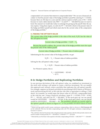
112
Hedge portfolio's payoff if stock is up
Hedge portfolio's payoff if stock is up = NsP(u) - Cu
113
Hedge portfolio's payoff if stock is down
Hedge portfolio's payoff if stock is down = NsP(d) - Cd
114
1) Lett Incorporated’s stock price is now $50, but it is expected either to rise by a factor of 1.5 or to fall by a factor of 0.7 by the end of the year. There is a call option on Lett’s stock with a strike price of $55 and an expiration date 1 year from now. What are the stock’s possible prices at the end of the year?
2) What is the call option’s payoff if the stock price goes up?
3) If the stock price goes down?
4) If we sell 1 call option, how many shares of Lett’s stock must we buy to create a riskless hedged portfolio consisting of the option position and the stock?
5) What is the payoff of this portfolio? (
**6)** If the annual risk-free rate is 6%, then how much is the riskless portfolio worth today (assuming daily compounding)?
**7)** What is the current value of the call option?
1) **($75 or $35)**
## Footnote
**2) ($20)**
**3) ($0)**
**4) (0.5)**
**5) $17.50)**
**6)** (**$16.48)**
**7)** (**$8.52**)
115
When constructing a hedge portfolio and deriving the PV, the input of
1) FV = ?
2) I/Y = ?
1) FV = NS\*P(u) - Cu = Ns\*P(d) - Cd
2) I/Y = rRF \* t / 365
**a) (be sure to input the percentage rate 6 for 6% vice 0.06)**
**b) remember to use daily or continuous compounding for options**
116
To discount a value by the continuously compounded risk-free rate, multiply by \_\_\_\_\_.
e-rRFt
117
Vput option
Vput option = VC - P +Xe-rRFt
118
Exercise value
MAX[Current stock price - Strike Price,0]

119
time value
option's price - exercise value
The time value of the option represents the **extra amount over the option's immediate exercise value** that a purchaser will pay for the chance the stock price will appreciate over time.
120
When using a risk-free portfolio: VC
Ns(P) - PVRFP
121
Number of stock shares in hedged portfolio
N = (Cu - Cd) / (P(u-d))
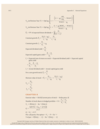
122
Variables used in Black-Scholes OPM (Options Pricing Model)
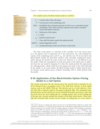
123
Black-Scholes OPM: VC
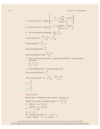
124
Black-Scholes OPM: d1

125
Black-Scholes OPM: d2
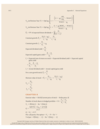
126
Put-call parity: Put option =
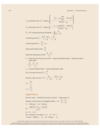
127
Black-Scholes: Vput

128
Net Issue price for bonds?? (p. 380)
M(1 - F)
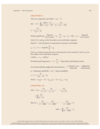
129
rPS with component cost of PS (i.e. flotation costs)

130
Market equilibrium
Expected rate of return = required rate of return
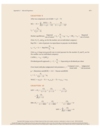
131
Rep / Div
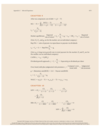
132
Using Rep/Div what is rM
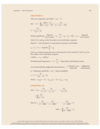
133
Own-bond yield-plus-judgmental-risk-premium: rS
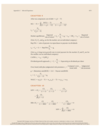
134
retention growth eqn. g = ?

135
cost of new external common equity
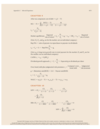
136
WACC
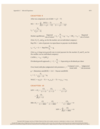
137
NPV
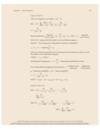
138
IRR

139
MIRR

140
PI
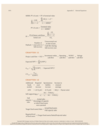
141
Payback
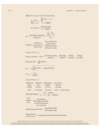
142
Current Value of hedge portfolio
Current value of hedge portfolio = Present value of riskless payoff
NS(P) - VC = Present value of riskless payoff
(p. 351)
143
1) Hedge portfolio's payoff if stock is up
2) Hedge portfolio's payoff if stock is down
1) NsP(u) - Cu
2) NsP(d) - Cd
144
Binomial method: Vc
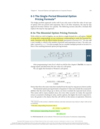
145
Black-Scholes: Vput
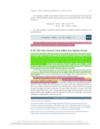
146
Payout ratio
Dividends / NI
DPS / EPS
147
Retention Ratio
Addition to RE / NI
= 1 - Payout ratio
148
How to find MIRR, IRR, NPV, and NFV using the TI BAII Plus Professional
see p. 427 for the following example
## Footnote
Project: _0_ _1_ _2_
A -1,000 1,150 100
B -1,000 100 1,300
The cost of capital is 10%. What are the projects’ IRRs, MIRRs, and NPVs? (IRRA = 23.1%, IRRB = 19.1%; MIRRA = 16.8%, MIRRB = 518.7%; NPVA = $128.10, NPVB = $165.29)
When using the TI BAII Plus Professional, use must compute (i.e. hit the "CPT" button) IRR, before the calculator will actuall hit the down arrow to get to the MIRR (i.e. "MOD") option. Note that you will have to input the reinvestment rate (i.e. "RI") value and hit "enter" before the "MOD" screen appears.
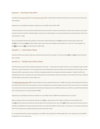
149
1) A project has the following expected cash flows: CF0 = -$500, CF1 = $200, CF2 = $200, and CF3 = $400. If the project’s cost of capital is 9%, what is the PI?
1) **(1.32)**
When calculating PI (profitability index), be sure to use the PV of future CFs that start with the end of year 1 =\> CF0 = 0. This is in contrast to finding the NPV where CF0 incorporates the cost of the project.
150
Calculate the **component cost** of debt, PS, and CS

151
question #4 from the attached image
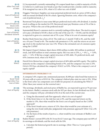
5.41%
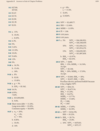
152
question #7 from the attached image
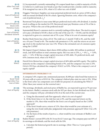
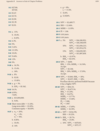
153
question #11 from the attached image
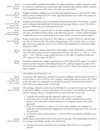
answer = **8.02%**
use PV = -4.42 FV = 6.5 N = 5 PMT = 0 then "CPT" "I/Y"
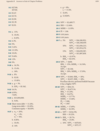
154
problem #12b from attached image

don't use the hint; just use the growth rate already calculated from part "a"

155
Project Cash Flow
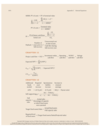
156
Expected NPV (from a portfolio with multiple NPVs)

157
σNPV (from a portfolio with multiple NPVs)
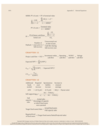
158
CVNPV
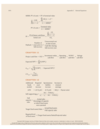
159
AFN
| (2 equations)
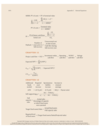
160
Self-supporting g

161
Full Capacity Sales
| (3 interrelated eqns.)
1) Full Capacity Sales
2) (Target fixed assets) / Sales
3) Required level of fixed assets
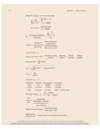
162
(Target fixed assets) / Sales

163
Required level of fixed assets
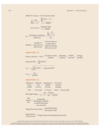
164
Residual Distribution
If a firm rigidly follows the residual distribution policy, then distributions paid in any given year can be expressed as follows:
Distributions = NI - Add. to RE needed to finance new investments
Distributions = NI - (Target equity ratio)(Total capital budget)
[p. 574]
165
1) Hamilton Corporation has a target equity ratio of 65%, and its forecasted capital budget is $2 million. If Hamilton has net income of $1.6 million and follows a residual distribution model, how much will its distribution be?
1) **$300,000)**
**Distributions** = Net income - Additions to retained earnings needed to finance new investments
**Distributions** = Net income - [(Target equity ratio) \* (Total capital budget)]
166
1) A firm’s most recent FCF was $2.4 million, and its FCF is expected to grow at a constant rate of 5%. The firm’s WACC is 14%, and it has 2 million shares outstanding. The firm has $12 million in short-term investments that it plans to liquidate and then distribute in a stock repurchase; the firm has no other financial investments or debt. Verify that the value of operations is \_\_\_\_\_\_\_.
2) Immediately prior to the repurchase, what are the intrinsic value of equity and the intrinsic stock price?
3) How many shares will be repurchased?
4) How many shares will remain after the repurchase?
5) Immediately after the repurchase, what are the intrinsic value of equity and the intrinsic stock price?
1) **$28 million**.
2) **($40 million; $20/share)**
3) **0.6 million**
4) **(1.4 million)**
**5) (*$28 million*; $20/share).** ***Review p. 585 to understand why the IVE decreases* by the amount of Cash used for repurchases.**
The VOP = HV. Note that the **multistage model is NOT used** bc the initial FCF used in the constant growth model is not occuring immediately or in the future, but instead has already occurred in the past. Therefore, the VOP is simply equal to the Horizon Value.
***p. 582 (bright green highlight) explicitly states that the "repurchase does not change the stock price."***
167
Residual Distribution
| (2 equations)
1) Residual Distributions = NI - Add. to RE needed to finance new investments
2) Residual Distributions = NI - [(Target equity ratio) x (Total capital budget)]
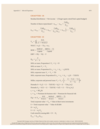
168
Number of shares repurchased (where repurchased shares are a form of distribution)
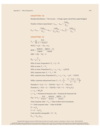
169
nPost

170
Capital Budget appears to equal OpCp

171
1) Suppose you have 1,000 common shares of Burnside Bakeries. The EPS is $6.00, the DPS is $3.00, and the stock sells for $90 per share. Burnside announces a 3-for-1 split. Immediately after the split, how many shares will you have?
2**)** What will the adjusted EPS and DPS be?
3) What would you expect the stock price to be?
1) (**3,000)**
2) **$2 and $1)**
3) **$30)**
172
Operating break-even point
The operating break-even point occurs when EBIT = 0.
EBIT = PQ - VQ - F = 0
P = Price Q = Quantity V = Variable costs per unit F = Fixed costs
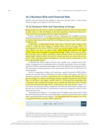
173
1) A firm’s value of operations is equal to $800 million *_after_* a recapitalization. (The firm had no debt before the recap.) The firm raised $200 million in new debt and used this to buy back stock. The firm had no short-term investments before or after the recap. After the recap, wd = 25%. The firm had 10 million shares before the recap. Its federal-plus-state tax rate is 25%. What is S (the value of equity after the recap)?
2) What is PPost (the stock price after the recap)?
3) What is nPost (the number of remaining shares after the recap)?
**Note:** The firm will still have the debt after the recap., and it will pay off that debt over time. The funds raised from the issue of debt will be used to repurchase stock**.**
1) **($600 million)**
2) **($80/share**)
3) **7.5 million)**
IVE = S = TIEnV - PS - D
TIEnV = Vop + VNOA where VNOA includes short-term investments
1) After the recap, S = 800M - 200M = **600M**
2) bc PPost = PPrior : PPost = 800M / 10M = **$80/share**
3) bc nPrior - nPost = (Dnew - DOld) / PPrior =\> nPost = nPrior - (Dnew - DOld) / PPrior
nPost = 10M - (200M / 80) = **7.5M**
174
Formula for calcuting I/Y when given PV, FV, and N

175
EBIT (w/ Q for Quantity)

176
Break Even Quantity
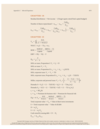
177
Miller, corporate and personal taxes, VL
Here Tc is the corporate tax rate, Ts is the effective personal tax rate on income from stocks, and Td is the tax rate on income from debt.
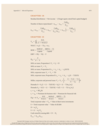
178
Hamada: leveraged beta = b
S = MVE in formula
D = Market value of debt
[p. 624)

179
Hamada: unleveraged beta = bu
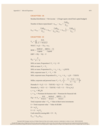
180
rs (include business risk and financial risk)
**business risk** - The risk inherent in the operations of the firm, prior to the financing decision. Thus, business risk is the uncertainty inherent in future operating income or earnings before interest and taxes. Business risk is caused by many factors; two of the most important are sales variability and operating leverage.
**financial risk** The risk added by the use of debt financing. Debt financing increases the variability of earnings before taxes (but after interest); thus, along with business risk, it contributes to the uncertainty of net income and earnings per share. Business risk plus financial risk equals total corporate risk.
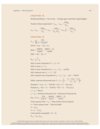
181
If g=0: Vop
(3 equations)
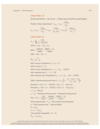
182
Total Corporate Value
This equation implies that
Total corporate value = TIEnV
where TIEnV = Total Intrinsic Entity Value
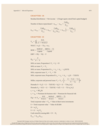
183
S
| (2 equations)
bc S = TCV - Value of all debt, wd in the equation below must? incorporate both long-term debt and short-term debt. [TCV = Total Corporate Value].
?? Ask Professor Cudd why the equation S = (1 - wd)Vop does NOT include Vnoa??
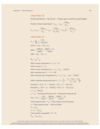
184
D
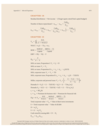
185
Cash raised by issuing debt
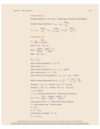
186
Pprior
(2 equations)
Pprior = Ppost
Pprior = Sprior / nprior
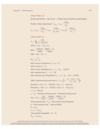
187
npost
| (2 equations)
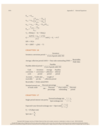
188
Ppost
| (2 equations)
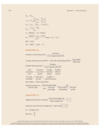
189
V0
(verify: I believe the subscript is a zero)

190
EPS
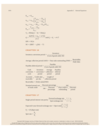
191
NI
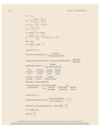
192
ICP
ICP = Inventory Conversion Period
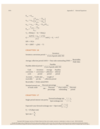
193
ACP
ACP = Average Collection Period
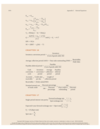
194
PDP
PDP = Payables Deferral Period
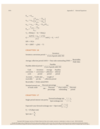
195
CCC
CCC = Cash Conversion Cycle
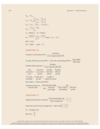
196
AR
## Footnote
(verify: 2 equations for AR; on the equation sheet, one equation is listed as "Accounts Receivable", and one is listed simply as "receivables"
AR = Accounts Receivable
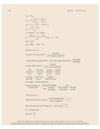
197
Receivables
## Footnote
(verify: 2 equations for AR; on the equation sheet, one equation is listed as "Accounts Receivable", and one is listed simply as "receivables")

198
Nominal annual cost of trade credit
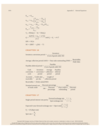
199
Effective cost of trade credit
[(1 + (finance charge / true price))^(365/(dco - dp)) - 1]

200
1) A company has annual sales of $730 million. If its DSO is 35, what is its average accounts receivables balance?
1) **($70 million)**
201
1) A company buys on terms of 2/12, net 28. What is its nominal cost of trade credit? (
2) The effective cost?
1) **46.6%)**
**2) (58.5%)**
**dco** = days credit is outstanding = the number after "net" =\> for 2/10 net 30 =\> dco = 30
**dp** = discount period = the number after the slash =\> for 2/10 net 30 =\> dp = 10
**tp** = true price = 100 - discount %
**fc** = finance charge = discount %
**\* note that (discount %) / (100 - discount %) = finance charge / true price = fc / tp**
1) Nominal cost of trade credit = [2/(100-2) \* 365/(28-12) = **46.56%**
2) Effective cost of trade credit = [(1 + (fc / tp)^(365 / (dco - dp)) - 1] = [(1 + (2/98)^(365 / (28 - 12)) - 1] = **58.5%**
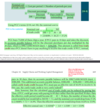
202
free trade credit vs costly trade credit
PCC buys 73,000 of these chips a year. If PCC pays in 10 days and takes the discount, its accounts payable balance will be the discount purchases per day multiplied by the 10 days, which is $98(73,000/365)(10 days) = **$196,000**. This amount is called **_free trade credit_** since PCC doesn’t have to pay anything to receive this trade credit.
If PCC, instead, pays in 30 days, then its accounts payable balance will be $98(73,000/365)(30 days) = $588,000. This additional accounts payable balance, $588,000 - $196,000 = **$392,000,** is called costly trade credit because PCC must pay an effective rate of 44.6% to receive it. In this case, the **_costly trade credit_** is very costly indeed!
**verify: For costly trade credit, why is the discount price of $98 used instead of the non-discount price of $100?**
203
1) Simple Interest rate per day
2) Interest charge for month using simple interest
1) Simple Interest rate per day = (Nomial rate) / 365
2) Interest charge for month using simple interest = (Rate per day)(Days in month)(Amount of loan)
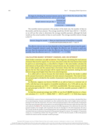
204
1) If a firm borrowed $500,000 at a rate of 10% simple interest with monthly interest payments and a 365-day year, what would be the required interest payment for a 30-day month?
**2)** If interest must be paid monthly, what would be the effective annual rate?
3) If this loan had been made on a 10% add-on basis, *_payable in 12 end-of-month installments,_* what would be the monthly payment amount?
4) What is the annual percentage rate?
5) The effective annual rate?
[p. 683]
1) (.1 / 365)(30 days)(500,00) = $**4,109.59**
2) EFF% = (1 + .1 / 12)^12 - 1 = **10.47**%
3) 500,00(1.10) / 12 = $**45,833.33**
4) Using financial calc: FV = 0 PV = 500,000 PMT = -45,833 N = 12 [CPT I/Y] =\> **I/Y = 1.4975** ; Then multiply I/Y = 1.4975 by 12 = **17.97%**
5) EFF% = (1 + .014975)^12 - 1 = 0.19526 = **19.53%**
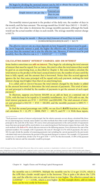
205
1) Assume that the indirect quote is for 10.0 Mexican pesos per U.S. dollar. What is the direct quote for dollars per peso?
2) Assume that the indirect quote is for 115 Japanese yen per U.S. dollar and that the direct quote is for 1.25 U.S. dollars per euro. What is the yen per euro exchange rate?
1) **(0.10 dollars per peso)**
2) **143.75 yen per euro)**
206
1) What is interest rate parity?
2) Assume that interest rate parity holds. When a currency trades at a forward premium, what does that imply about domestic rates relative to foreign interest rates? What does it imply when a currency trades at a forward discount?
3) Assume that 90-day U.S. securities have a 4.5% annualized interest rate, whereas 90-day Swiss securities have a 5% annualized interest rate. In the spot market, 1 U.S. dollar can be exchanged for 1.2 Swiss francs. If interest rate parity holds, what is the 90-day forward rate exchange between U.S. dollars and Swiss francs?
4) On the basis of your answer to the previous question, is the Swiss franc selling at a premium or discount on the forward rate?
**[p. 721]**
1) Interest rate parity means that investors should expect to earn the same return on security investments in all countries after adjusting for risk.
2) If a dollar buys more of the foreign currency in the spot market than in the forward market, then the foreign currency is appreciating. Therefore, the **_forward foreign currency_** is selling at a **premium**. [p. 718]
3) **(0.8323 $ per SFr or 1.2015 SFr per $)**
4) (**Discount)**
207
FOREX: direct quote
**_direct quote_** - When discussing exchange rates, the number of U.S. dollars required to purchase one unit of a foreign currency. For example, EUR/USD 1.20 is a direct quote meaning that the rate is 1.20 dollars per euro.
208
FOREX: indirect quote
**_indirect quote_** - When discussing exchange rates,the number of units of foreign currency that can be purchased for one unit of home currency. For example, from the U.S. perspective, USD/JPN 80 is an indirect quote meaning that the rate is 80 yen per dollar.
209
Single-period interest rate parity

210
Expected t-year forward exchange rate
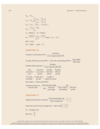
211
Ph
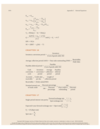
212
Spot rate
Note that the **spot rate** is expressed as a **direct rate**; it is the **number of units of home currency** that can be exchanged for **one unit of foreighn currency.**
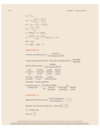
213
1) A computer sells for $1,500 U.S. dollars. In the spot market, $1 = 115 Japanese yen. If purchasing power parity holds, what should be the price (in yen) of the same computer in Japan?
**(¥172,500)**
214
The current exchange rate is 1.1 dollars per euro. A 5-year U.S. government bond has a 3% yield, and a 5-year French government bond has a yield of 4%. What is the expected 5-year forward rate?
EXforward = 1.1 \* (1.03 / 1.04)^5 = **(1.0481 dollars per euro)**
Note that the annualized rates are left as given in contrast to, for example, 90 day securities that must have either rh or rf multiplied by (90/365).
215
216
Do the Interest rate parity problems from the image below:

217
Amount left on the table

218
Percentage shares owned by new investors

219
nnew
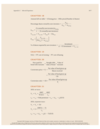
220
VPost-IPO

221
POffer

222
% of shares required by new investors
## Footnote
[p. 756]
new investors expect to own a % of the company's shares equal to the % of the company's value they provide

223
1) A privately held company has an estimated value of equity equal to $100 million. The founders own 10 million shares. If the company goes public and sells 1 million shares with no underwriting costs, how much should the per share offer price be?
2) If instead the underwriting spread is 7%, what should the offer price be?
1) ($10.00)
2) ($9.93)


